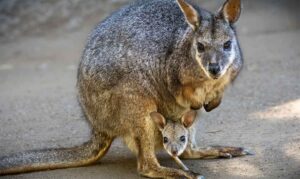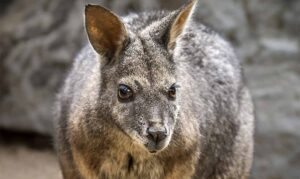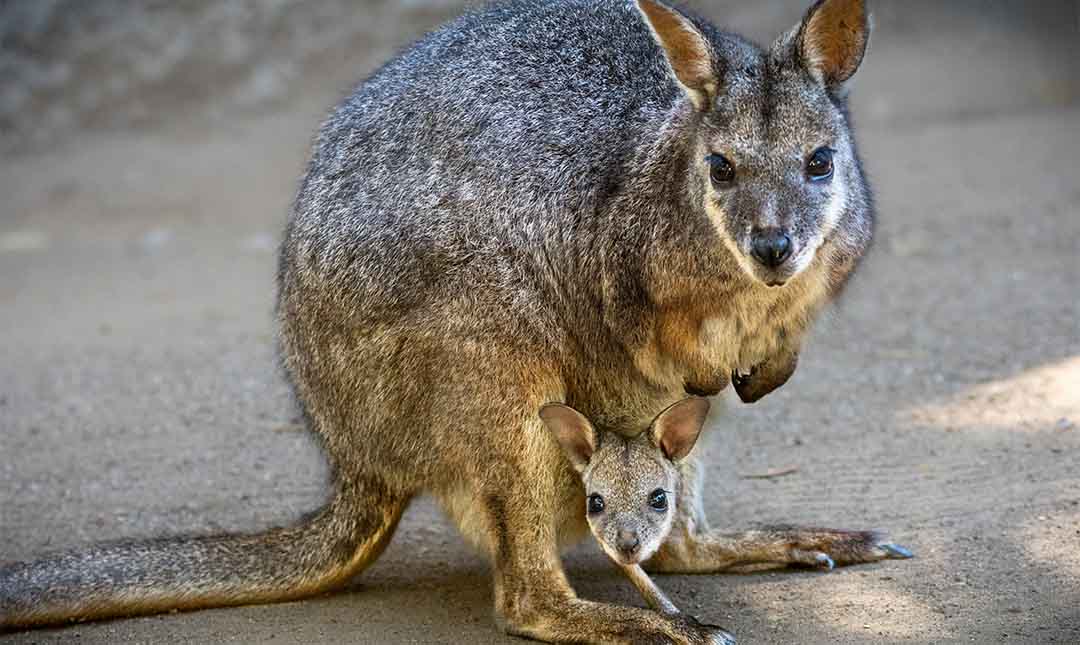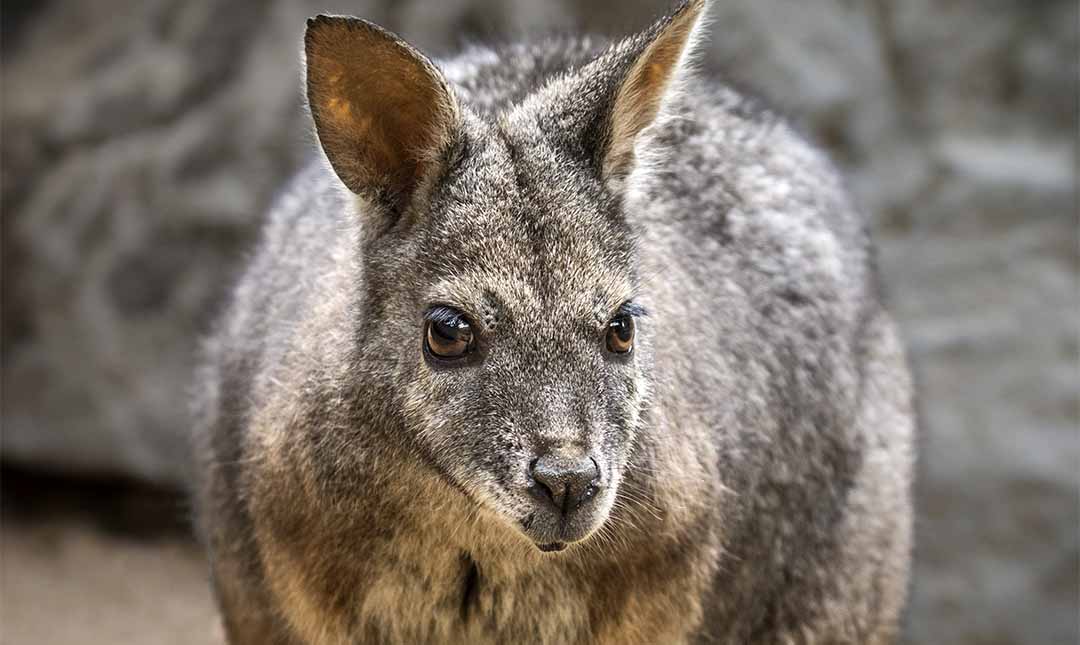About
Both kangaroos and wallabies are macropods, meaning “large footed.” There is little difference between a kangaroo and a wallaby except size, and tammar wallabies are among the smallest species of wallabies. They are named “tammar” after the tamma sheoak (Allocasuarina corniculata) shrub thickets, which provide shelter during the day. They come out at night to graze when it is cooler. Tammar wallabies live in groups called mobs that may include up to 50 members. Wallabies move forward by hopping, using their back feet to push off and their tails for balance. If they sense danger, they will give warning thumps with their hind legs. Predators include dingoes, foxes, and feral cats.
Tammar wallabies, unlike other macropods, have a fixed breeding season, so all offspring in the mob are born at the same time. Females are pregnant for approximately a month and then give birth to a single joey that resides in its mother’s pouch for 8 to 9 months. The female mates again only a few hours after giving birth, but they are able to pause their pregnancy (embryonic diapause) for up to 11 months.
Tammar wallabies became extinct in the wild on the South Australian mainland in the 1930s as a result of habitat destruction, unregulated hunting, and the introduction of invasive species such as foxes and domestic cats. A large population persists on Kangaroo Island, south of Adelaide. After extensive fox control, they were reintroduced on the mainland at Innes National Park in November 2004. The tammar wallaby was among the first Australian marsupials chosen for genome sequencing. Studies will add significantly to our understanding of marsupial evolution.


Habitat
In Western Australia tammar wallabies live in a few widely scattered colonies on the mainland and four offshore islands. In South Australia they live on Kangaroo Island and have been reintroduced on the mainland.
Diet
These marsupials are herbivorous, eating mainly grasses. If no fresh water is available, they can survive on the moisture they obtain from dew, juice from succulent plants, and seawater.
Physical Characteristics
Body length is 20 to 27 inches and weight ranges from 15 to 20 pounds. Lifespan is 11 to 14 years.
LOCATION WITHIN THE ZOO
You’ll find this animal in the Australia section. See Zoo Map.


